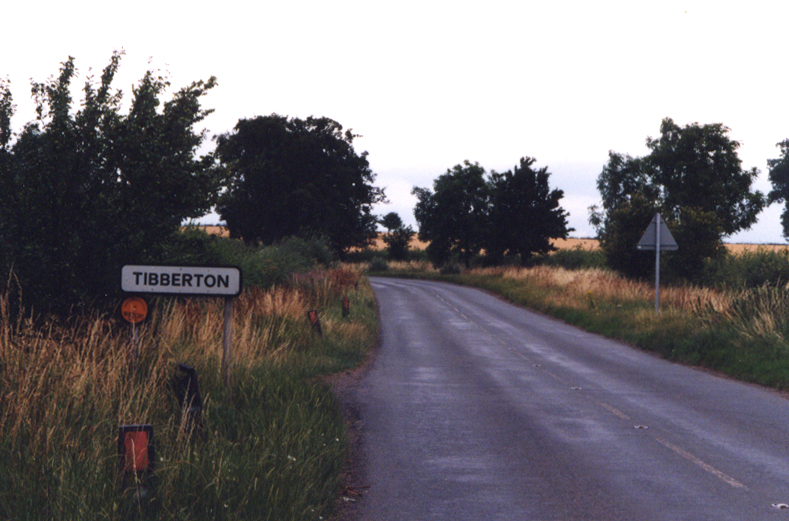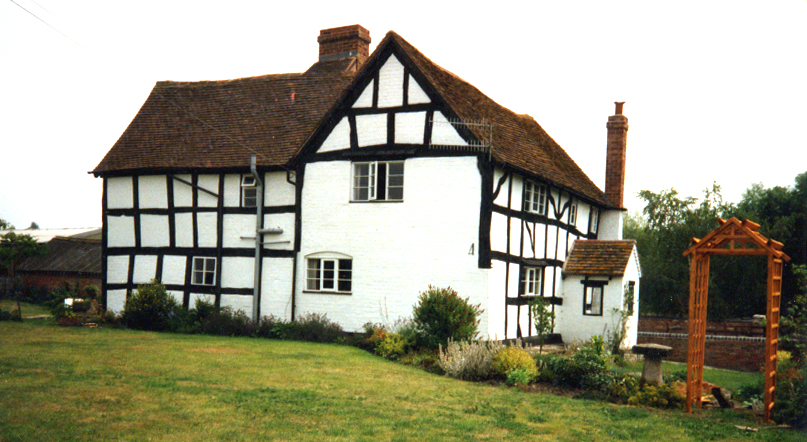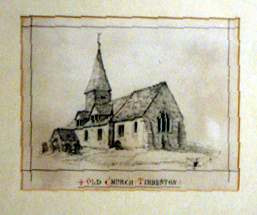
This
is the 'main' road into the village of Tibberton
Tibberton
Tibberton is a village located in the county of Worcestershire in an area of England called the Midlands. It is about 9 km. East and slightly North of the cathedral in the city of Worcester. Moorend, where William Preston Davis was born, is par of the town of Tibberton and is comprised of two homesteads: Moorend Farm and Moat Farm. William was born at Moat Farm. In those days the home was divided up into several residences.
This is Moat Farm
Click the map to enlarge. Moat Farm and Smite Hill are highlighted in yellow. Smite Hill is where William lived when his father died .
Tibberton has been known by many names during its history.
For example:
| Tidbridghtingtune | 10th century |
| Tidburton | 11th century |
| Tibrictune, Tibrithtun | 12th century |
| Tiburtone, Tibritton, Tybryton | 13th century |
| Tyberton | 14th century *1 |
Saint Peter's ad Vincula Church Tibberton
St. Peter ad Vincula Church was where William was baptised.

I visited Tibberton in 1995 and took a bunch of
photographs of the town. You can see them on my Flickr site.
Church History
The original church was built around the 13th century. It accommodated about 100 people. The church was dedicated to God and St. Peter ad Vincula, the same dedication as the church in the grounds of the Tower of London.
In the 16th century the church was dedicated to St. Nicholas, due probably to the division of the Anglican church from Rome.
Prior to the 19th century, a school room was added to the North side of the church and opened into the church. 45 children attended this school and in addition, 40 other children attended the village school.
In the 19th century the church building had become so dilapidated that it was replaced by the present church. Seating for for 145 people. The church was built in the 13th century style with stone and it consisted of a chancel, nave, South porch and a bell turret (with two bells) and a shingled spire at the West end. Oak taken from the old church was used again in the flooring and the altar rails. the entrance door was also made from boards from the old church and some stone was reclaimed and used. The church registered baptisms dating from 1680, burials from 1684 and marriages from 1683.
In 1884 a vicarage house was built and a vicar took
up residence. The vicars were Mr. Godfrey, Mr. Kingsmill and
the
Rev. L.C. Cooper. *1
